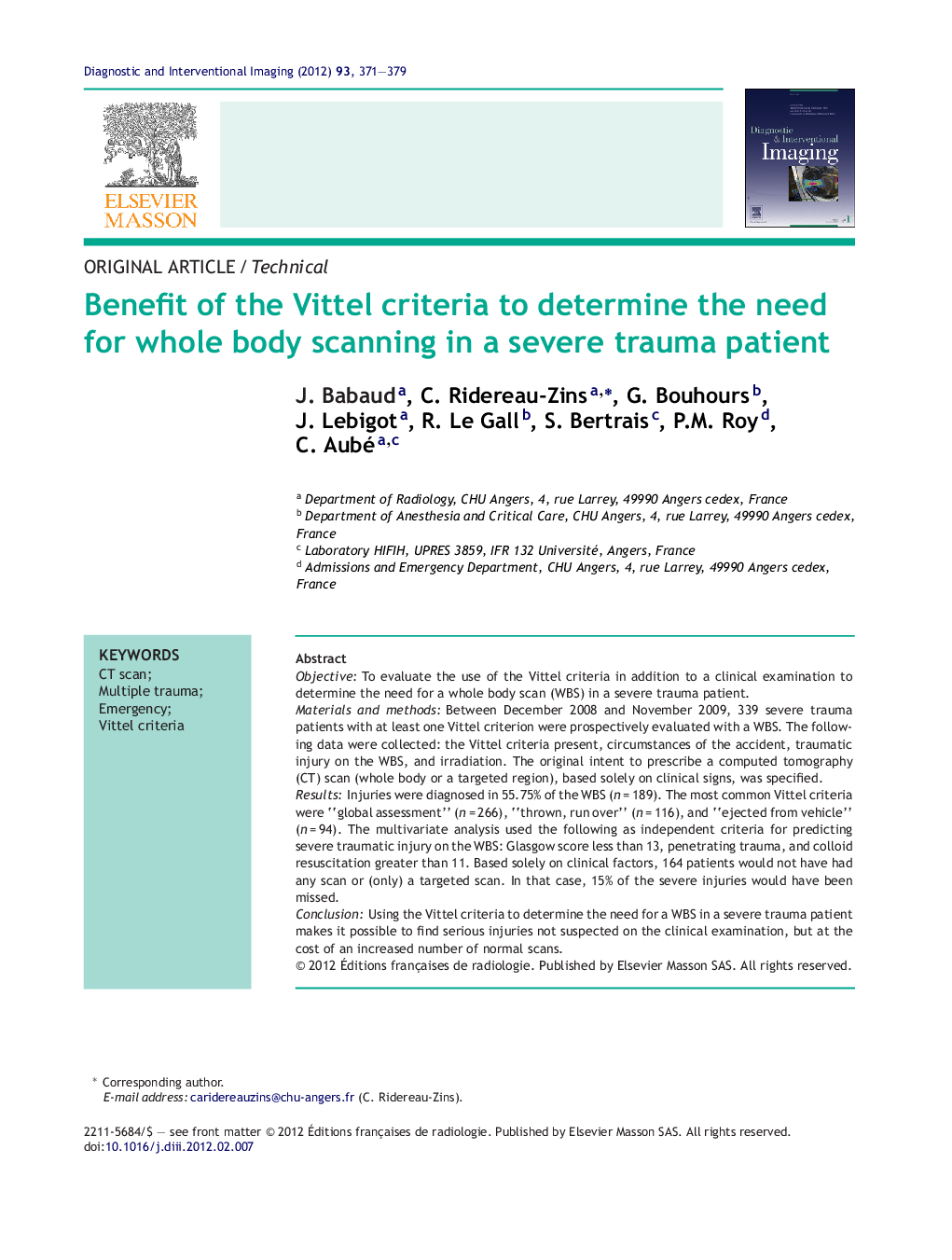| Article ID | Journal | Published Year | Pages | File Type |
|---|---|---|---|---|
| 2736892 | Diagnostic and Interventional Imaging | 2012 | 9 Pages |
ObjectiveTo evaluate the use of the Vittel criteria in addition to a clinical examination to determine the need for a whole body scan (WBS) in a severe trauma patient.Materials and methodsBetween December 2008 and November 2009, 339 severe trauma patients with at least one Vittel criterion were prospectively evaluated with a WBS. The following data were collected: the Vittel criteria present, circumstances of the accident, traumatic injury on the WBS, and irradiation. The original intent to prescribe a computed tomography (CT) scan (whole body or a targeted region), based solely on clinical signs, was specified.ResultsInjuries were diagnosed in 55.75% of the WBS (n = 189). The most common Vittel criteria were “global assessment” (n = 266), “thrown, run over” (n = 116), and “ejected from vehicle” (n = 94). The multivariate analysis used the following as independent criteria for predicting severe traumatic injury on the WBS: Glasgow score less than 13, penetrating trauma, and colloid resuscitation greater than 11. Based solely on clinical factors, 164 patients would not have had any scan or (only) a targeted scan. In that case, 15% of the severe injuries would have been missed.ConclusionUsing the Vittel criteria to determine the need for a WBS in a severe trauma patient makes it possible to find serious injuries not suspected on the clinical examination, but at the cost of an increased number of normal scans.
